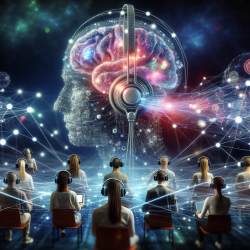Empowering Practitioners: Harnessing Neural Insights for Autism Therapy
In the realm of speech-language pathology and online therapy, understanding the neural underpinnings of behavior is crucial for developing effective interventions. The study titled Neural mechanisms of negative reinforcement in children and adolescents with autism spectrum disorders provides groundbreaking insights into how children with autism process negative reinforcement, shedding light on the neural mechanisms that influence social motivation.
Understanding the Research
Recent research has focused on the atypical reward processing in individuals with Autism Spectrum Disorders (ASD), particularly in how they respond to negative reinforcement. The study utilized functional magnetic resonance imaging (fMRI) to compare neural responses to social and non-social negative reinforcement between children with ASD and typically developing children.
The findings revealed that children with ASD exhibit hypoactivation in the right caudate nucleus when anticipating non-social negative reinforcement and in a network of frontostriatal regions during social negative reinforcement. These regions are crucial for processing rewards and punishments, suggesting that atypical responses in these areas may contribute to the social motivational deficits observed in ASD.
Implications for Practitioners
For practitioners, these findings underscore the importance of incorporating an understanding of neural mechanisms into therapeutic practices. Here are some actionable insights:
- Tailored Interventions: Develop interventions that specifically address the unique neural processing patterns in children with ASD. By focusing on enhancing the responsivity to negative social cues, practitioners can help improve social motivation and engagement.
- Data-Driven Approaches: Utilize data from neuroimaging studies to inform therapy strategies. Understanding the specific neural deficits can guide the creation of targeted exercises that strengthen underactive neural pathways.
- Continuous Learning: Encourage ongoing research and professional development to stay abreast of the latest findings in neural mechanisms and their implications for therapy.
Encouraging Further Research
The study opens the door for further research into how interventions can be optimized by targeting the neural circuits involved in negative reinforcement. Future studies could explore the long-term effects of such interventions and how they impact social functioning and quality of life for individuals with ASD.
By embracing a data-driven approach and integrating neural insights into practice, practitioners can significantly enhance the therapeutic outcomes for children with autism. This not only improves the efficacy of interventions but also empowers children to engage more fully with their social environments.
To read the original research paper, please follow this link: Neural mechanisms of negative reinforcement in children and adolescents with autism spectrum disorders.










